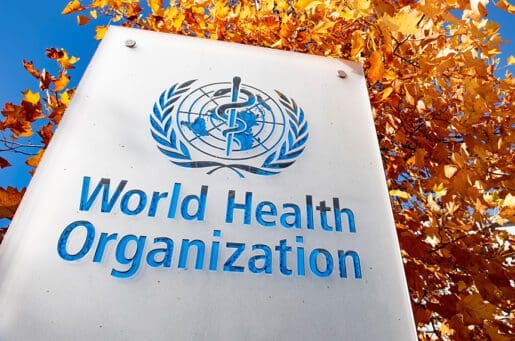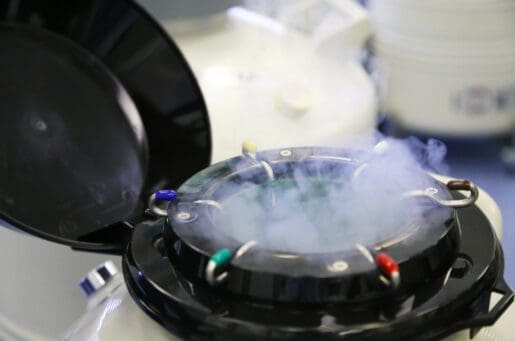Bioethics Forum Essay
Balancing a Patient’s Autonomy Against Misinformation
Case Narrative
Ms. J, a 45-year-old mother of three, was admitted to the emergency department with significant shortness of breath. With her children by her side, she relayed that she had tested positive for Covid 10 days prior and had not been vaccinated. Having done her own research, she had been self-medicating at home with vitamins. At the hospital she was found to have Covid pneumonia and very low blood oxygen, and was started on a high-flow nasal cannula delivering oxygen at the maximum rate of 60 liters per minute. Her blood oxygen remained low, however, and she was transferred to the intensive care unit to be put on a ventilator. The team reported that, with ventilator support, Ms. J would have a 50% chance of making a full recovery, and that without it she would almost certainly die. That notwithstanding, Ms. J declined to consent to the ventilator.
She explained that, from the various articles she had read, ventilators did not work for Covid, and said she had heard that hospitals were only putting Covid patients on ventilators in order to receive significant remuneration from the federal government. She wanted to leave the hospital immediately to get vitamins that she thought would relieve her shortness of breath. Both the attending physician and the nursing staff were distressed. They reported that, if Ms. J were to remove the nasal cannula and leave the hospital, she would very likely die before making it to the parking lot. But Ms. J was unwavering – she did not believe she was at risk of death by leaving the hospital and she was minutes away from walking out. The team called an ethics consult to help them think through the dilemma between respecting Ms. J’s preference and protecting her from grave harm in the context of false beliefs.
Ethical Analysis and Process
Under normal circumstances, the ethics team would have met with the treating team, the patient, and perhaps the patient’s family with the aim of facilitating consensus among the parties. But there wasn’t time to arrange meetings. Ms. J’s situation was emergent, and the treating team felt that the need for ventilator support was imminent. So, the ethics team spoke to the treating team by phone.
The focus of the phone call was on Ms. J’s capacity to decline treatment. It was acknowledged that patients have the right to refuse any and all treatments, even life-sustaining treatments. However, before honoring a patient’s decision to decline important medical treatment, health care providers have an obligation to assess the patient’s decision-making capacity. While denying someone with decisional capacity the right to guide their own health care is clearly unethical, failing to protect someone without decisional capacity from a harmful choice is a moral failing, as well. The ethics team outlined that patients with decision-making capacity are able to: (1) communicate a clear choice, (2) demonstrate understanding of their medical condition, (3) appreciate their clinical situation and the benefits and burdens of treatment (as well as of forgoing treatment), and (4) reason through the decision, applying the relevant medical information to their values and interests. Importantly, the ethics team also explained that when the decision is particularly consequential (e.g., there is a high risk of avoidable death without treatment), the threshold for a patient being judged as having demonstrated capacity is commensurately high.
The medical team explained that Ms. J was certainly able to communicate a clear choice. She also seemed to understand what the treating team was telling her, and she was able to demonstrate some reasoning as to why she wanted to leave the hospital and why she was refusing to be put on a ventilator. Rather than focusing on her understanding or her reasoning, the ethics team called attention to whether Ms. J was demonstrating sufficient appreciation of her clinical condition and the likely consequences of declining treatment. Ms. J was not merely in disbelief about the likelihood of death should she forgo ventilation; she was in disbelief about the possibility of such an adverse outcome. In short, her false beliefs about her disease meant she was unable to demonstrate sufficient appreciation of the likely consequences of forgoing treatment. The clinical ethicists reminded the treating team that each of the four abilities is necessary for capable decision-making. If there was significant doubt about Ms. J’s capacity, the ethicists said, the treating team should err on the side of caution: judge her to lack capacity and encourage her to identify a surrogate decision-maker (e.g., one of her adult children) to help with treatment decisions.
The Decision
The treating team informed Ms. J of their concerns about her decision-making capacity given the dire consequences of forgoing ventilation, and they asked if they could turn to one of her children to help with the decision. Fortunately, Ms. J identified one of her adult daughters as her surrogate. Her daughter provided consent and was even able to persuade Ms. J that her life depended upon remaining in the hospital and receiving ventilator support. Even more fortunately, the treatment was successful. Ms. J left the ICU a week later and was discharged from the hospital soon after.
Lingering Questions
Despite the auspicious outcome of this case, it raises three challenges. First, shouldn’t the medical team have respected Ms. J’s autonomy and let her make her own decision, even if, in the team’s professional judgement, her decision was a bad one? Again, if Ms. J had demonstrated sufficient decision-making capacity—based on the four abilities outlined above—then, yes. Patients demonstrating capacity get to make their own treatment decisions, even decisions that go against medical judgement and are life-threatening. But when patients fail to appreciate the likely outcomes of their decisions and instead have false beliefs about the consequences of forgoing treatment, they lack decision-making capacity. Respecting the preference of a patient without sufficient capacity does not necessarily respect their autonomy, but instead could potentially constitute a failure to act in their best interest.
Second, it was fortunate that Ms. J’s daughter was able to persuade her mother to accept treatment. But what if she hadn’t been able to do so? When a patient who declines treatment lacks capacity, it doesn’t necessarily follow that treatment should be provided over the patient’s objection. The potential benefits of a treatment must always be weighed against the burdens of the treatment. And, when treatment is provided over a patient’s objection, the benefit should be especially strong, given the significant psychological and emotional harms often associated with involuntary treatment. If Ms. J had not been persuaded, the treating team and her daughter would have had to decide whether treatment, all things considered, was in Ms. J’s overall best interest.
Lastly, what should the team have done if Ms. J’s daughter had the same mistaken beliefs and incredulity about her mother’s dire prognosis? What if her entire family shared those beliefs? What about when those beliefs are widespread? Given the extent of misinformation about Covid treatment, it’s not unreasonable to assume that a significant minority of the U.S. population held beliefs similar to Ms. J’s and that these beliefs may have had a political etiology. Does this mean that a significant minority of the population would lack decision-making capacity if they found themselves in Ms. J’s situation?
There is no well-worked out theory of incredulity and its relationship to capacity. And there are certainly differences between false beliefs, conspiracy theories, and delusions. That notwithstanding, it is important to note that not all false beliefs undermine capable decision-making. Believing that the Earth is flat, for example, does not undermine a patient’s capacity to decide between life-saving treatment and leaving the hospital against medical advice. But when a patient has false beliefs that are pertinent to the decision at hand–for instance, a belief that their illness is not severe and can be remedied with vitamins–these false beliefs can undermine their capacity to make decisions in line with their own conception of the good, about what makes a life worthwhile. Just as incredulity about a diagnosis can prevent patients from making capable decisions about treatment, incredulity about the likely consequences of a decision can lead to a judgement of incapacity.
Daniel Edward Callies, PhD is a clinical ethicist and the ethics program manager for the University of California, San Diego Health System.
Series Editors’ Comment: Considering Humility and Trustworthiness
Honoring patient autonomy cannot be done in a vacuum. Autonomy is relational insofar as it depends on the sharing of information and the ability to work through complicated decisions with others. But the choices we make are molded by social norms, beliefs, and values. This is why the process of eliciting a patient’s values and expertise, sharing relevant clinical knowledge, and, ultimately, supporting the patient in choosing the best pathway forward for them cannot be abstracted from ordinary, deep-seated norms, beliefs, and, importantly, imbalances of power. While health care professionals are trained experts in clinical care, their power to adjudicate truth and falsity of individual beliefs is necessarily limited.
Ms. J’s case demonstrates the importance of balancing respect for autonomy and harm prevention, but also the important virtues of humility and trustworthiness. As many patients know, health care is an imperfect science and health care providers sometimes get it wrong. This complicates their efforts to assess a patient’s capacity based on appreciation of consequences and reasoning about options, especially when assessment of decision-making capacity can be weaponized to justify acting over a patient’s stated objections.
While Callies rightly relies on the gravity of the harm (likely death) and the patient’s lack of appreciation that she might die, health care professionals should question what appreciation means in the context of opposing sociopolitical values and related beliefs. There are broader harms—experienced and witnessed during the Covid pandemic—that result from behaviors that create and perpetuate distrust. Acting over a patient’s objections—even if justified by nonmaleficence for a patient without decision-making capacity—has consequences that can reverberate in families and communities. How should these moral harms be weighed? This is a powerful question that cannot be answered by health care professionals alone.
Ethics consultants can help health care professionals appreciate the importance of this question and work with all engaged parties to determine who has the authority to answer it definitively in a given case. Yet, the question will always recur, as will other moral questions essential to the practice of medicine, each time providing another opportunity to situate the meaning of health care within the context of its practice.
Trust and distrust arise in case-by-case enactments of power and authority in everyday health care practice. The authority that trained health care professionals have over shaping clinical conversations carries a risk of harm: in attempting to focus on medical facts, health care professionals may circumvent open speech and, in the process, sow distrust and convey bias.
This is the heart of the moral dilemma posed by the case of Ms. J. It is right to question whether honoring choices tied to reasons that are personal, even political–and are disputed by many health care experts–could serve to build patient or community trust and support broader community benefit, even if honoring those choices means risking a patient’s life. At the same time, the death of such a patient risks increasing distrust in the capacity of health care professionals to save the lives of patients who are vulnerable to the harms of the politicization of medical facts.
Ultimately, ethics consultants can support serious consideration of patients’ voices and rights, while simultaneously building trust and minimizing harm, by helping health care professionals align medical care with the values conveyed by their patients. After assessing a patient’s capacity to make decisions, with close attention to possible biases at play and holistic consideration of the severity of the risks to the patient, ethics consultants may sometimes conclude that life-saving therapy cannot be provided over a patient’s objection. These decisions should always be recognized as uncertain and made with humility.
– Georgina Campelia and Thomas Cunningham
Learn more about the series, Clinical Ethics Case Studies for Hastings Bioethics Forum.
Read the previous essays in the series here, here, and here.
Attention clinical ethicists: learn how to contribute to the series.













Campelia and Cunningham worry that acting over a patient’s objections, even in the case of a patient without decision-making capacity who will die without the intervention, can destroy trust in families and communities. I agree that trust is important, but if the decision is justified, as it was in this case, the impact of overriding a patient’s decision will have virtually no impact on trust in the community, and should not be part of the ethics committee’s decision. Much more important to trust in medicine is a responsive health care system that includes a personal physician committed to the patient’s well-being. The public’s awareness of the role that money unfortunately plays in medical decision making is far more destructive of trust than the decisions of ethics committees.
I love that you’ve shared this case study and also that you added your very valuable comments. I’ve been contemplating similar issues for some time and they have made me appreciate how complicated this area can be. I’d like to share three anecdotes from my own experiences because they show this complexity quite well.
For decades, I have had a friend who sometimes has unusual and very rigid views on medical matters. She has recently learned that she is autistic, which probably accounts for the rigidity. She’s also a lawyer. Only she (and possibly her daughter, a psychologist) will be able to recognize who I am talking about, should she stumble upon this comment, which is unlikely. My friend comes across as very well read and knowledgeable; she uses a kind of language that easily impresses people. It used to impress me too; I got to know her before I quit my low-level job and went to university. She came from a family of academics whereas my parents had little more than a basic primary school education. I used to take a lot of what she said at face value.
After the pandemic hit, we had a video call in which she told me that she was highly concerned about the Covid vaccines. She predicted that they would result in major health problems. One day, she wrote that many people were falling seriously ill after their vaccinations and that it was even being documented (but essentially kept from the public) by the authorities and she sent me some links. These links were on the site of the European Medicines Agency (EMA). They were being shared on conspiracy sites as proof of how dangerous the vaccines were. I fully blame this on sloppiness on the part of EMA, not taking into consideration that lay people read the information that the EMA posts online too and the EMA and medical professionals not being consistent in the terminology and definitions that they use. I looked at the data, explored the site, saw that the data could easily cause people to jump to the wrong conclusions and I explained to her how I interpreted those data. She fully accepted my explanation. A day or so later, she had gone back to her old view that the vaccines were dangerous and when I told her that I had just gotten my first vaccination, she panicked a little and foresaw serious health problems for me.
Years earlier, she needed surgery because she was anemic as a result of a myoma that caused a lot of blood loss. She had waited for quite some time to see how this situation would develop, but it was getting worse. A full hysterectomy was planned. My friend, who reads a lot of legitimate medical information as well, met with her surgeon and suggested an operation that would be much less extensive and would leave part of the uterus intact. This has several benefits. The surgeon concurred and my friend got what she wanted. Because of historically skewed views of women, a full hysterectomy is still often suggested as a remedy for several medical situations when this is not actually needed. So here my friend’s deviation from the medical consensus was spot on.
Many years before that, on the other hand, she and I clashed badly when she was into all kinds of alternative methods for treating infections. My brother-in-law and one of his daughters were in hospital at the time, very severely ill with a Salmonella infection. What I saw on various sites is a failure to understand that humans, too, are biological organisms. These sites are often run by people who think along the lines of “bleach cleans well so if you have an infection, you should drink bleach or inject yourself with it to clean yourself internally”. My friend had suggested silver, which is indeed often useful for treating superficial wounds. I felt very strongly that drinking a silver solution is one of the last things that you should suggest with regard to someone whose blood oxygen is extremely low. The justifications she gave me for her advice, however, confused me even more. “I’m not a medical professional, so I can say this.” At the time, I had no idea that she is autistic and neither did she. She often uses a different kind of logic. What most humans call logic probably often is merely the drawing of conclusions on the basis of information that they already have but aren’t aware of. Autistic people think differently. In these kinds of contexts, it can be helpful to try to follow the reasoning of someone else, no matter how strange it may sound.
It’s even more complicated. Tied to the first lingering question mentioned by Callies are the concept of dignity and also, in an unusual way, the notion of educational (or socioeconomic) inequality.
Let’s consider the option that this patient merely refused the ventilator on the basis that it would constitute an unacceptable loss of dignity for her.
What is dignity? Out of curiosity, I explored this a few years ago and it just so happens that I included the example of the ventilator in that exercise. I started with the so-called principle of humanity: “Every human being has the right to a life in dignity” (Buchanan-Smith, 2003). We probably have global agreement on this principle of humanity, no matter where we are from or what our religious background is.
I had to conclude that it is not possible to define dignity for someone else. We can only define it for ourselves. In my little exercise, I then came up with the following examples. Consider that nudity equals a lack of dignity for many people, but not at all for many other people. Being too ill to eat and use the bathroom without assistance can constitute an unbearable lack of dignity for one person but be acceptable to someone else. Being unable to breathe and needing a ventilator may be where the latter person draws the line, while someone else may still find that acceptable but would like to avoid being in a coma or some other form of vegetative state for, say, more than a month.
Dignity clearly is a personal concept. It is the result of cultural and religious influences and one’s personal preferences and experiences. The examples I just gave, of being on a ventilator and so on, are western and contemporary, but that does not matter. So, to be able to decide whether something will affect our dignity, we have to be able to make decisions. That is tied to capacity.
What if this patient had fully agreed with the medical professionals, but had refused the ventilator on the grounds that the ventilator would result in an unacceptable loss of her dignity?
During the phone call, “it was acknowledged that patients have the right to refuse any and all treatments, even life-sustaining treatments”. So if the patient had been savvy enough in this specific area, she might have lied and might very calmly have said this instead of what she really said. I understand that her wish would likely have been granted and that she would likely have passed away. If her daughter had become the surrogate decisionmaker in this alternative version of the case, the daughter might now have agreed and might not even have been willing to persuade her mother, in view of the fact that even with the ventilator, the mother’s chance of survival was only 50%.
Buchanan-Smith, Maggie (2003) How the Sphere Project Came into Being: A Case Study of Policy-Making in the Humanitarian Aid Sector and the Relative Influence of Research. Working Paper 215. Overseas Development Institute, London, U.K. 34 pages.
Daniel Callies reports on an ethical problem that many of us saw during the pandemic. I am reminded of a similar case in our institution. A 52 year old woman came to the Emergency Department in hypoxemic respiratory failure due to SARS CoV2 pulmonary infection. Hi-flow nasal oxygen provided insufficient relief. Accordingly, endotracheal intubation and mechanical ventilation were advised. She refused, stating that “she knows that if you go on a ventilator with COVID, you die” and made it clear that she had no intention of dying. Her son requested that hydrocychloroquine be administered. When the case was brought to my attention, it was because the admitting hospitalist had entered a DNI order at the patient’s request, and defended this course of action, noting: “that is what the patient asked for.” Almost 50 years ago, In re Quinlan established a right to die at a time when medical culture was far less willing to accord such authority to patients and families. In 2024, I am far more concerned about a medical community too ready to replace the physician’s fiduciary obligation to his patient’s best interest with the prescription of “caveat emptor” — the watchword of the vendor-customer relationship. Dr. Pellegrino expressed precisely this concern when he criticized the reductive “non-interference” model of Autonomy that has come to characterize much of medical culture.
While I share the concern that overriding a patient’s refusal of care should not be undertaken likely, there is more at stake here, as Callies suggests. Was our patient’s refusal authentic? It appeared to contradict in stark and forceful terms, the patient’s goals of care. If we separate the “means” from the “ends” of medical care, and ascribe to the patient indubitable expertise about the the latter (but not the former), conflicts like this one may be resolved in a different, better and more patient-centered way. The problem in such cases involves parsing decisional capacity. I suppose that if the patient had declared herself to be a member of an anti-intubation religion, we might have been compelled to reach a different conclusion. As it happens, she did not. Nor do I find it persuasive to argue that a fatal encumbrance by “alternative facts” constitutes a personal right worthy of protection. I am persuaded, on the other hand, that this was an instance of impaired autonomy due to a mistaken belief, similar in effect to one the T Beachamp and J Childress cite in Principles of Biomedical Ethics (8th ed) in their chapter on Autonomy. While coercion is unjustifiable, the physician is obligated to direct her best efforts to trust building and respectful persuasion in an effort to save this patient’s life.
I deeply appreciate this thoughtful discussion of Callies’ essay. In my experience, all of these considerations would be central to the ethical analysis, though it can be hard to fully voice in a culminating chart note or essay. I agree that fulfilling a core responsibility to promote the patient’s wellbeing, from the patient’s perspective, is central and yet complicated by the beliefs that guide the justification of declining a potentially life-saving medical intervention. Determining whether or not compelling mechanical ventilation is ethically justifiable is never a simple “yes” or “no” because, as each of you suggest, the how is critical. Each direction–taken without conversation, understanding and care–could cause substantial harm, disrespectfulness and injustice.
Thinking beyond this case, yes, trust in the healthcare system depends on healthcare professionals who truly promote patient wellbeing. And what it means to manifest trustworthiness and promote wellbeing should be informed by histories of healthcare systems not promoting wellbeing for all patients equally or equitably and, in fact, causing substantial harms, which include systematically acting over objections or preferences of marginalized groups who continue to be underrepresented in positions of power in healthcare settings. Promoting patient-centered wellbeing requires considering all consequences, with due consideration for the patient’s perspective, community impact, and in some cases trauma in healthcare settings. These consequences will naturally shift in risk and scope of harm or benefit depending on the particulars of the case.
Often ethics consultants are put in a role of building trust that was lost. I find that I often do this by holding multiple truths. Enforcing the correspondence of a belief with medical fact may be less important, and even counterproductive, to a fair and effective ethics consultation process. Perhaps more important is taking beliefs and values seriously even when a patient’s beliefs are connected to false medical information. In this case, continuously reminding or focusing on the connection between mechanical ventilation and the patient’s value of longevity may only lead to defensiveness, distrust, and be ineffective in supporting the shared value of saving the patient’s life.
Ultimately, what I think each of you point to in different ways is that the mere fact that an intervention is potentially life-saving AND in line with a patient’s value of longevity is central to the ethical analysis. However, this fact alone does not necessarily justify compelling the intervention over objections, even when there are questions about the patient’s decision-making capacity.
I experienced the COVID pandemic as a bedside nurse working in an ICU at one of the leading hospitals in NYC. Our COVID patients arrived already intubated after they had failed initial treatment in other areas of the hospital. In most cases our patients’ failure to recover at lower levels of care had been brought about not by the virus itself, but by the patient’s own immune response. This case study, with its quick resolution after a simple intervention, seems to offer too much confirmation bias to foster the healthy dose of humility when overriding a patient’s stated wishes which the series editors’ comment correctly prescribes.
I would suggest that if a patient is capable of arguing for alternate treatments and even contemplating standing and getting dressed then the imminence of the need for intubation may be overstated. As for tests of competency I would note that presenting oneself to a hospital emergency room with one’s adult children by one’s side (and, no doubt, forgoing numerous opportunities to stop for vitamins and return home enroute) during the midst of a global pandemic is a good indicator as to the family’s (if not the patient’s) appreciation of the direness of the medical situation. One of my close relatives’ husband died of COVID … at home isolating in his basement … because both my relative and her husband refused to believe that the husband lacked the physical fortitude to confer COVID immunity (2 years later my relative still chooses to believe this). Where the author, when questioning the patient’s level of appreciation of her prognosis, writes “sufficient appreciation” I would suggest that the italics should be reversed. By what metric does one gauge the “sufficiency” of another person’s level of appreciation? My relatives, by refusing the option to engage the medical system at all as is their right, demonstrated what a true lack of appreciation of a medical situation looks like – this is not that. And pointing out that Medicare renumeration is higher for an ICU stay, although insulting, is nevertheless a valid and factually correct answer to Applebaum’s “why do you think your doctor has recommended this treatment” question when assessing appreciation. If, as the author states, we believe that “when the decision is particularly consequential … the threshold for a patient being judged as having demonstrated capacity” is to be adjusted upwards, then what are the metrics and the increments by which our sliding threshold of sufficiency is to be adjusted? This all sounds like a very convenient way for us to substitute our judgement for the patient’s judgement. Lastly, the folly of basing our assessment of a patient’s mental competence on their appreciation of what statistics mean is illustrated by the popularity of lotteries and gambling – many state budgets and the entire city of Las Vegas are literally built on a foundation of the lay public’s lack of appreciation for the meaning of population-level statistics when applied at the individual level.
This case study simply reinforces the benefits of engaging families in goals of care discussions. As illustrated by the case of Dax Cowart the true test of our system of overriding a patient’s will, however, is not when things quickly go well but when they do not. This patient’s own immune system could easily have reacted so violently to the presence of the COVID virus as to cause organ failure leading to a range of sequelae, resulting in a prolonged and complicated ICU stay, significant and lasting physical disabilities, or even death. Would we feel vindicated in overriding our patient’s expressed wishes in such a case? Grappling with the range of potential negative outcomes is a far superior method to interrogate our decision making processes when it comes to overriding patient wishes than trafficking in anecdotes that simply confirm our biases.